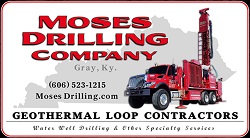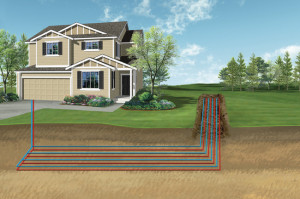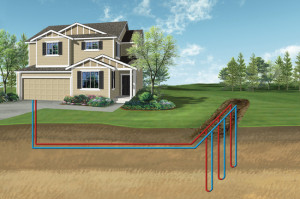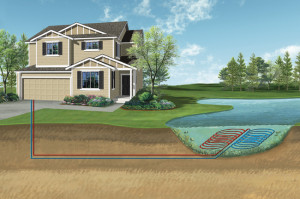Horizontal Closed Loop System
Horizontal closed loop systems are used when adequate land surface is available and vertical closed loop systems are uneconomical due to geological ground conditions that require casing. Depending on geothermal system needs and space available, pipes are placed in trenches that range in length from 100 to 400 feet. These systems typically require a large amount of land surface to be installed and take up the most room by far.
Vertical Closed Loop System
Vertical closed loop systems are the most common loop system we install. Residential homes and large commercial buildings and schools often use vertical systems because the land area required for horizontal loops would be prohibitive. Vertical loops are also used where the soil is too shallow for trenching, and they minimize the disturbance to existing landscaping. For a vertical system, holes (approximately four (4) inches in diameter) are drilled about 10 feet apart and 150 to 400 feet deep. Then pipes that are connected at the bottom with a U-bend to form a loop are installed into these holes. Vertical loops are then connected with horizontal pipes (i.e. manifold), placed in trenches, and connected to the heat pump in the building.
Pond / Lake Closed Loop System
If the site has an adequate water body, pond/lake closed loop systems may be a good option. A supply and return line pipes are run underground from the building to the water and coiled into circles at least eight feet under the water’s surface to prevent freezing. The coils should only be placed in a water source that meets minimum volume, depth, and quality criteria.



